The exhibition "Rolling Red River" reminds us of the sacrifices and hardships of the capital's army and people, contributing to the victory of the long-term resistance war against the French. Thereby, it arouses national pride,educates the tradition of patriotism, the morality of "drinking water, remembering its source", "repaying gratitude" so that today's young generation can further "keep the fire of tradition - step forward into the future", contributing to building the Fatherland in the new era.
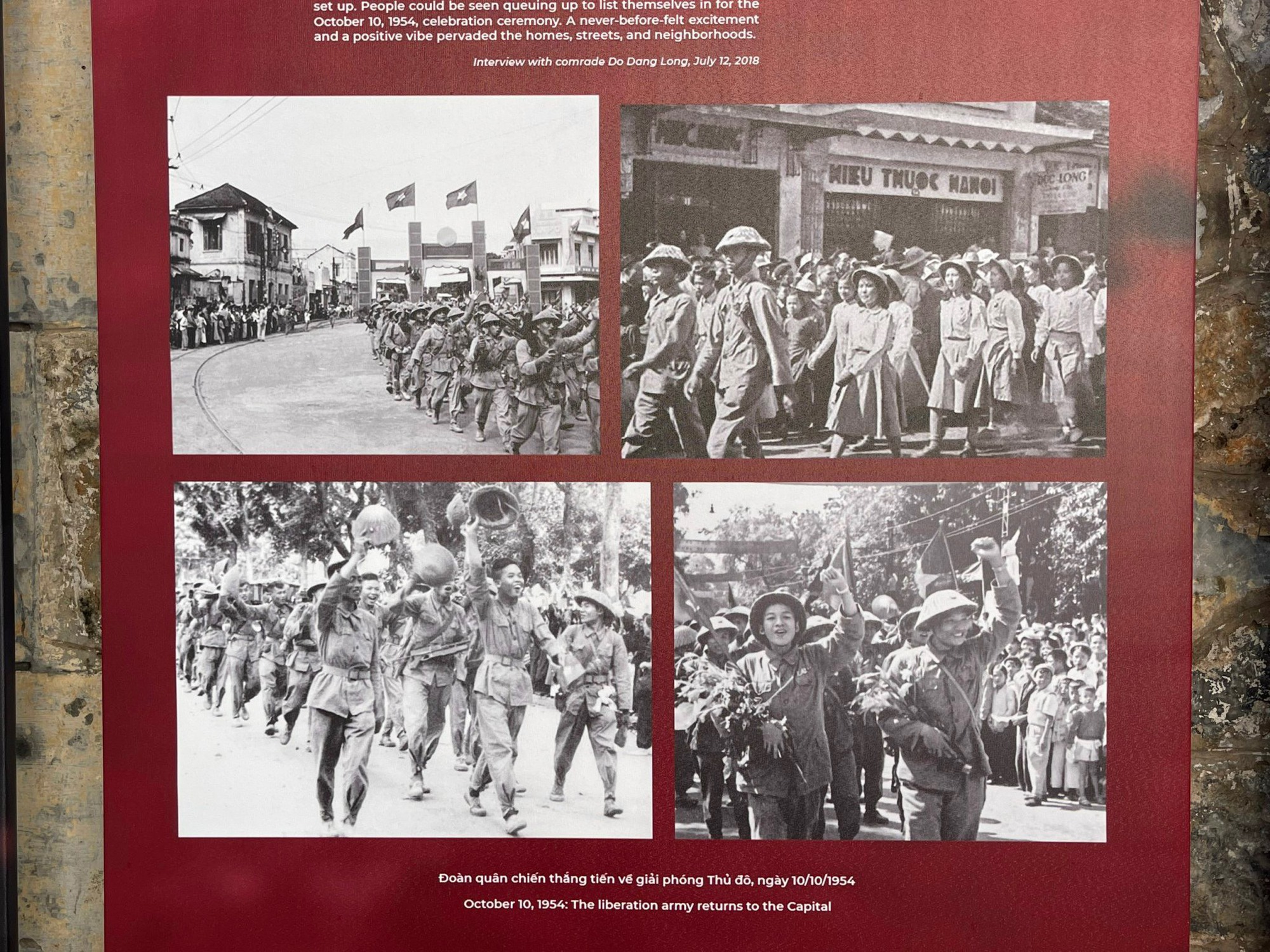
The image of the victorious army marching to liberate the capital on October 10, 1954 is forever imprinted in the memories of many historical witnesses.
Reenacting 60 days and nights of steadfast fighting
The exhibition is presented through two contents: Long-term resistance war and Historical return day . Long-term resistance war recreated the atmosphere of the capital's army and people responding to the call for national resistance , during 60 days and nights of steadfast fighting to "hold" the enemy in the heart of the city, establishing heroic feats, creating conditions for the whole country to prepare to enter the long-term resistance war.
Lieutenant General Vuong Thua Vu, former Commander of the Hanoi Front, once recounted: "At that time, everywhere people urgently carried tables, chairs, cabinets, rosewood beds, stalls, altars, chests and hundreds of other valuable items and threw them onto the streets. Self-defense brothers detonated mines, cut down trees, and felled lamp posts across the streets, creating obstacles for kilometers to hinder enemy machinery. Train and tram workers overturned locomotives and train cars to block the intersections of Cua Nam, Kham Thien, and Hue streets."
After the national resistance war, the French colonialists immediately occupied Hoa Lo prison and used it to detain patriotic figures such as: Royal Office Secretary Pham Khac Hoe, lawyer Vu Van Hien, Professor Hoang Xuan Han, doctor Tran Van Lai...
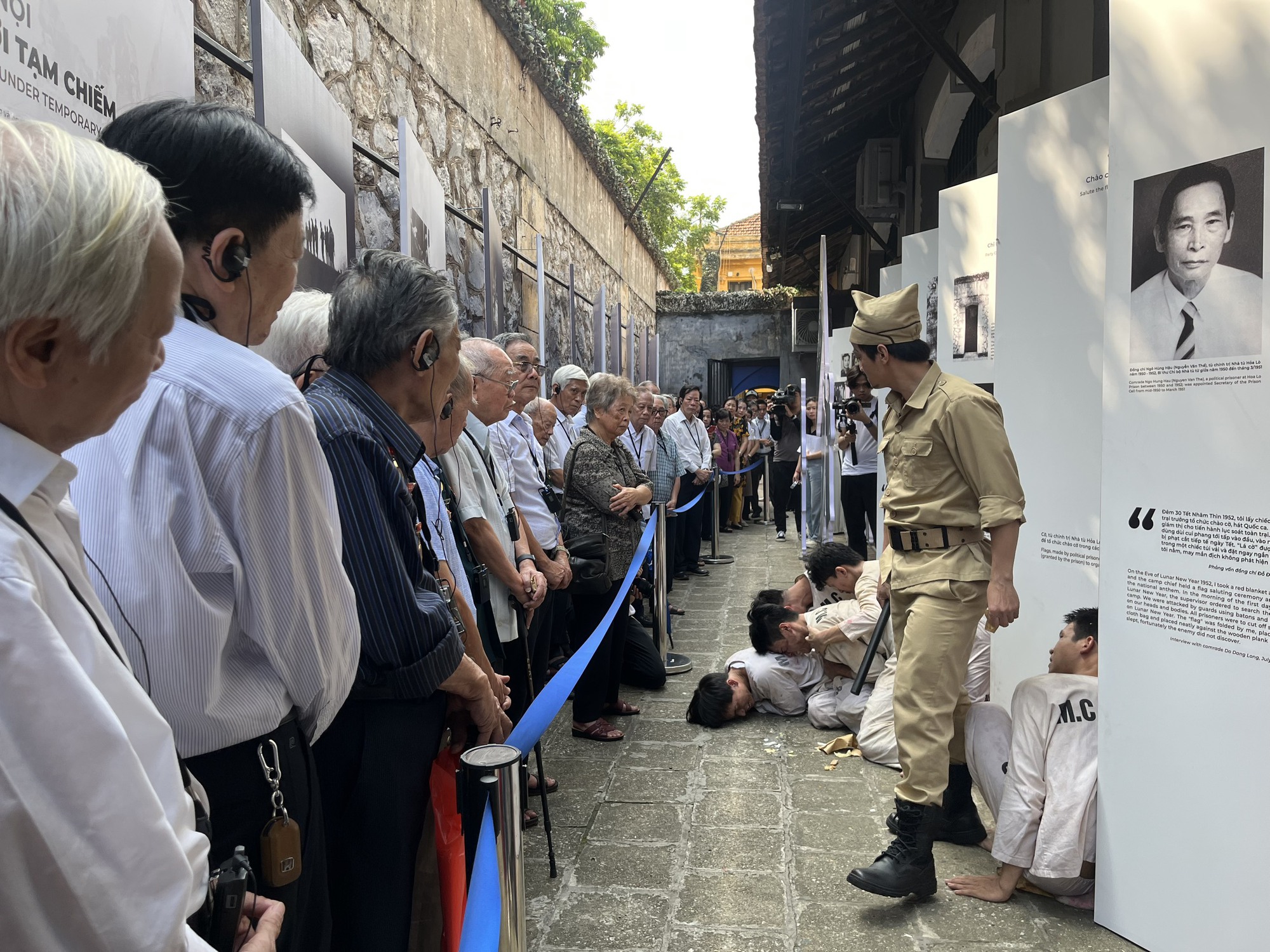
Scene reenacting the flag-raising and national anthem singing activities to celebrate Lunar New Year of Hoa Lo political prisoners
Ms. Do Hong Phan, a historical witness, said that despite having to live in a "rain of bombs and bullets", the red flag with yellow star always appeared unexpectedly in the city. Hanoians still secretly sheltered cadres, contributed money and strength to support the resistance. The inner-city commandos organized raids on Gia Lam airport and Bach Mai airport. The resistance students joined forces, raising a strong movement of struggle; organized strikes, and performed art performances to support the resistance...
At Hoa Lo Prison, right in the enemy’s lair, the Prison Party cell was born, opening a new phase. Core party members were elected by their comrades as cell secretaries such as Le Dinh Cau, Nguyen Ngoc Kien, Nguyen Huu Thoa (aka Nguyen Tien Ha)…
Under the leadership of the Party cell, hunger strikes and prison breaks took place with careful preparation and specific plans, such as the escape of 16 political prisoners on death row (night of December 24, 1951), the hunger strike (January 3, 1952)...
Emotional promise came true
In the Historical Day section, the exhibition shows that the victory of the Dien Bien Phu campaign marked a historical milestone, forcing the enemy to sign the Geneva Agreement and withdraw troops from North Vietnam.
On the morning of October 10, 1954, the Hanoi Military Commission and military units divided into many large wings, launching a historic march into Hanoi. 200,000 people in the capital excitedly welcomed the victorious army back. The whole of Hanoi rejoiced in the joy of liberation.
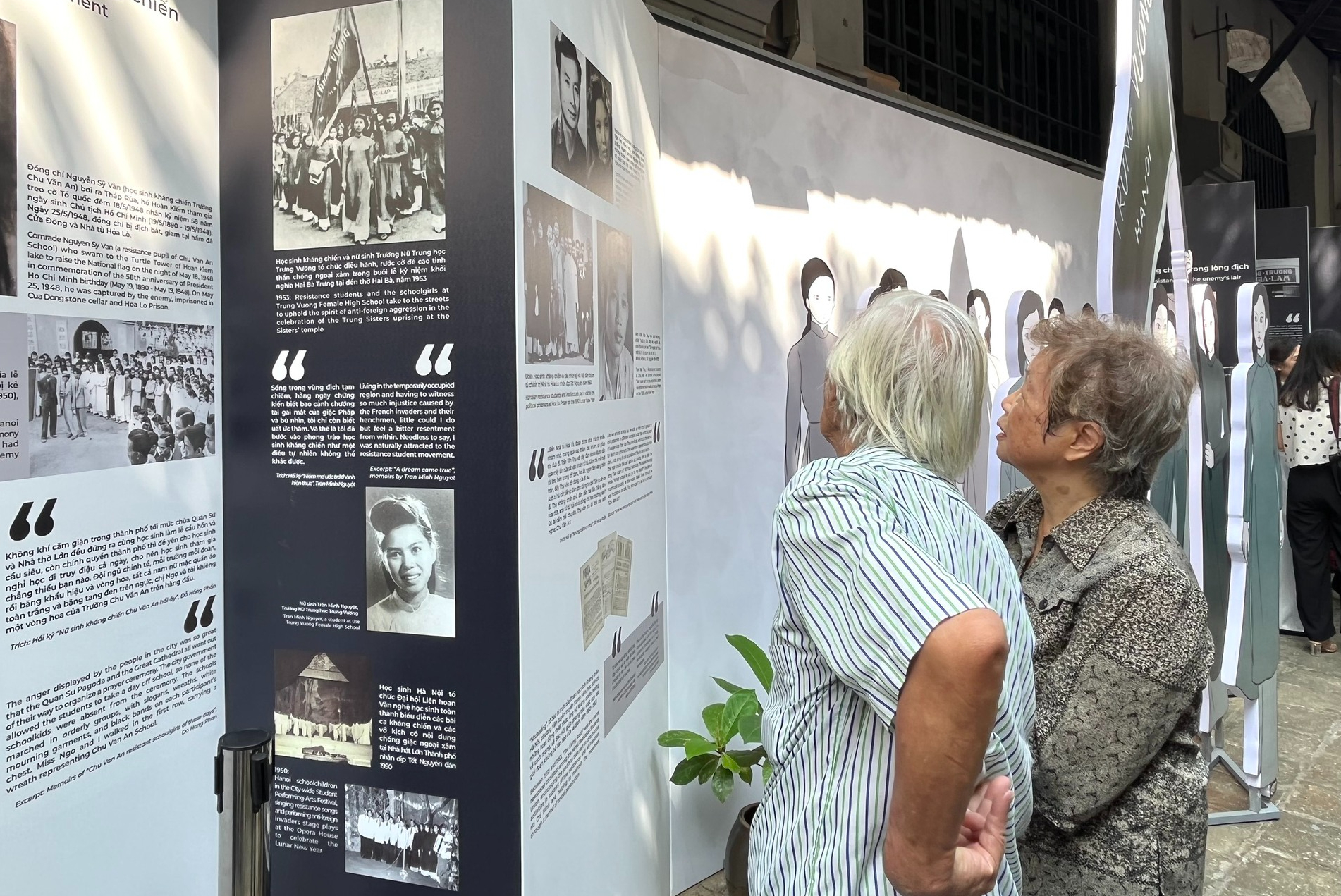
Historical witnesses visit the exhibition "Rolling Red River"
Recalling that historic moment, Major General Vuong Thua Vu, Commander of the 308th Division and Chairman of the Hanoi Military Commission, recounted in his memoirs: "The deeper we went into Hanoi, the harder it was to hold back our emotions. Tears filled our eyes because of the joy of meeting and the joy of returning to the capital. Especially the officers and soldiers who fought on this land in the past, when ordered to leave, promised Hanoi "they would return", and that promise has come true today".
At exactly 3:00 p.m. on October 10, 1954, the Hanoi Opera House siren sounded. The entire city turned toward the Hoang Dieu flagpole to hold the historic flag-raising ceremony. Major General Vuong Thua Vu respectfully read President Ho Chi Minh's appeal to the capital's people. Uncle Ho's simple, intimate and warm appeal and congratulations were also the wishes, joys and jubilant songs in the hearts of every cadre, soldier and citizen of Hanoi.
Mr. Nguyen Tien Ha, a former political prisoner at Hoa Lo Prison, former officer of the Hanoi Military Front, attended the historic flag-raising ceremony on the afternoon of October 10, 1954, and recalled: "Looking at the red flag with a yellow star flying proudly on top of the Hanoi Flag Tower, I was moved to silence. Tears welled up in my eyes remembering my comrades, comrades, and compatriots who sacrificed their lives. I am extremely grateful to the martyrs who helped me fulfill the oath hidden in my name: Nguyen Tien Ha, which I chose, means to march to Hanoi to liberate the capital."
Source link







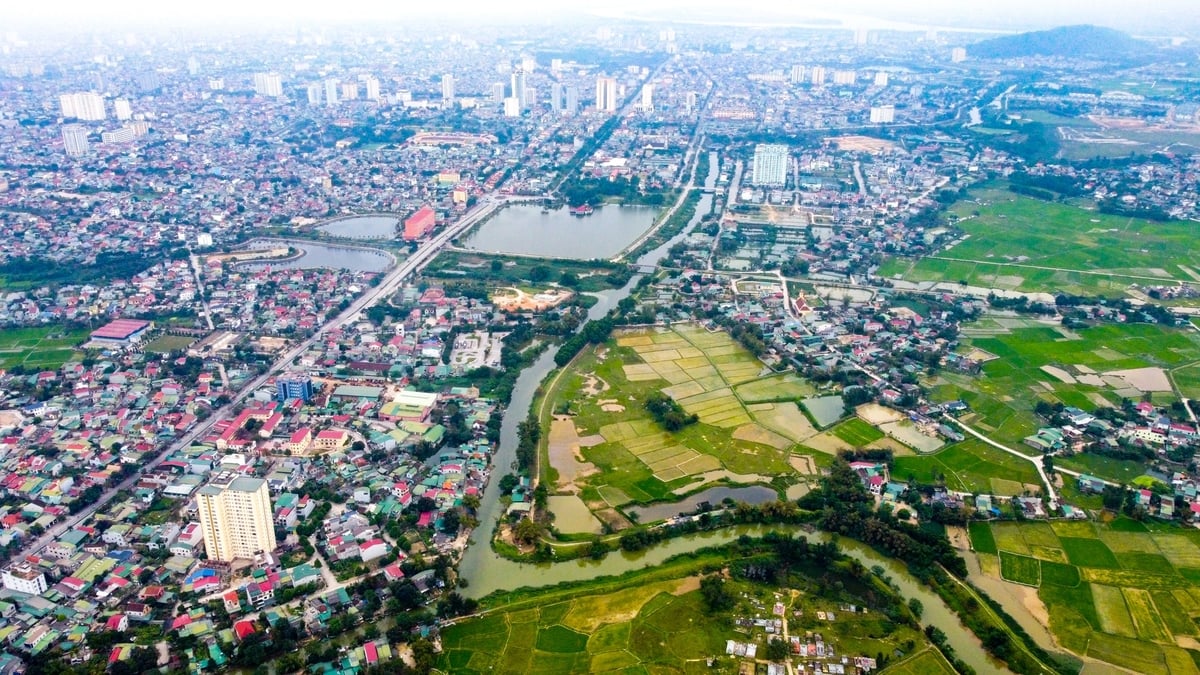

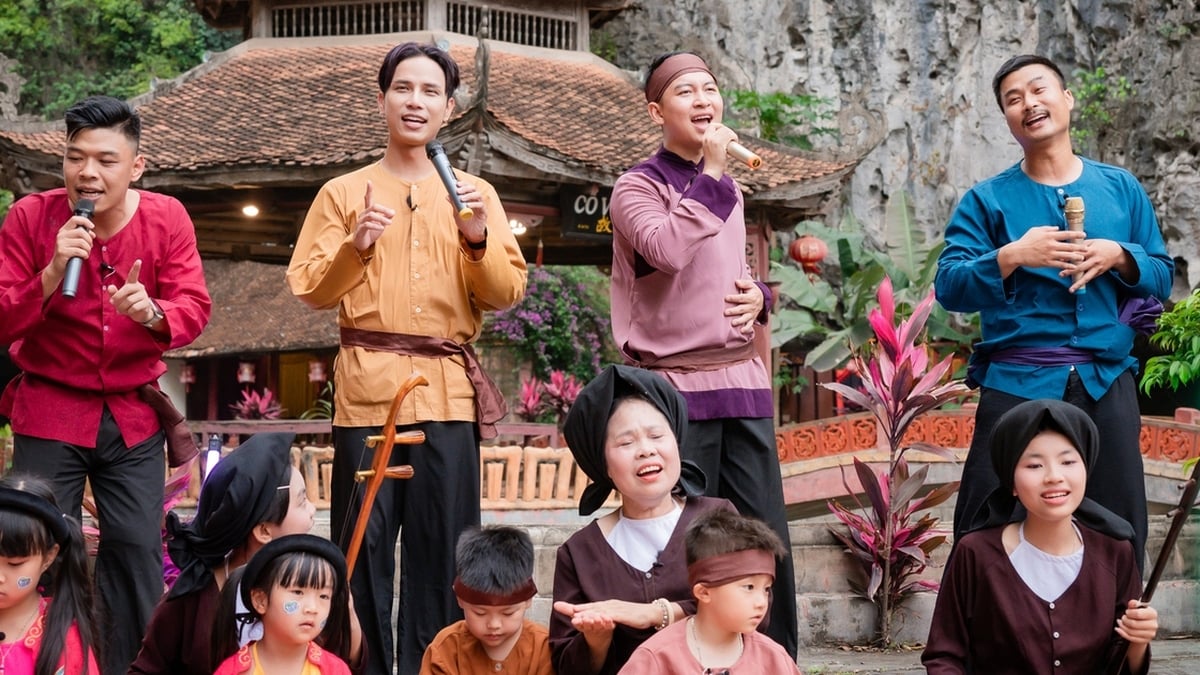































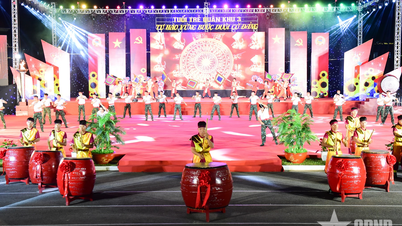


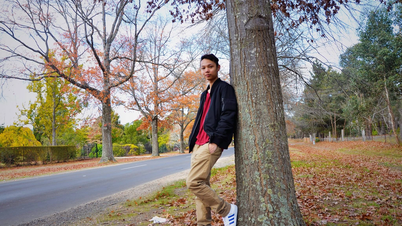





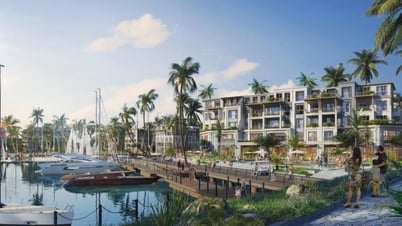
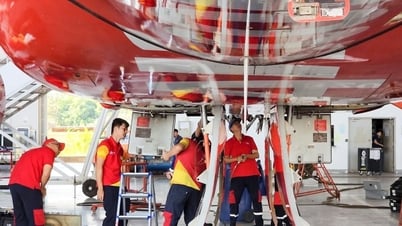

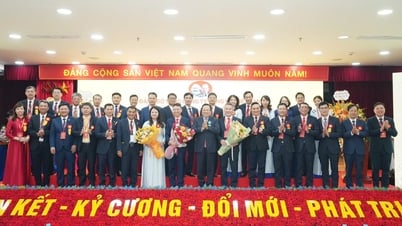






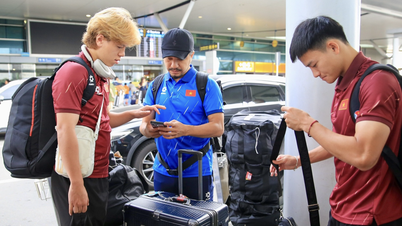


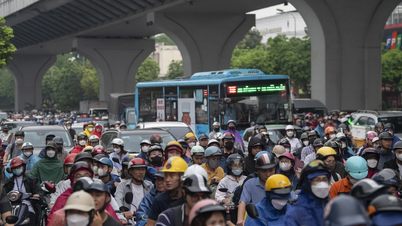
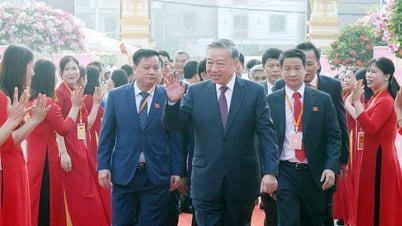
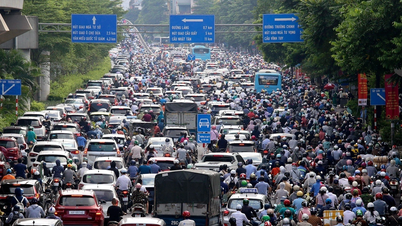
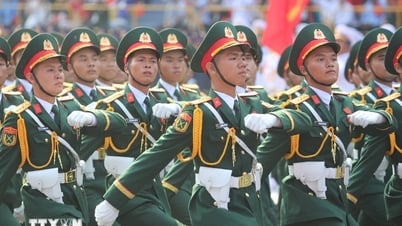
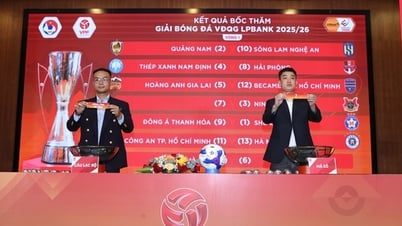


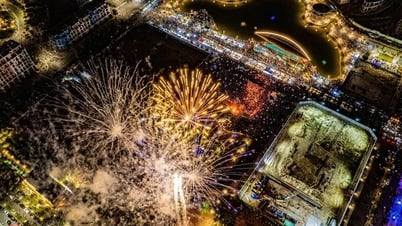


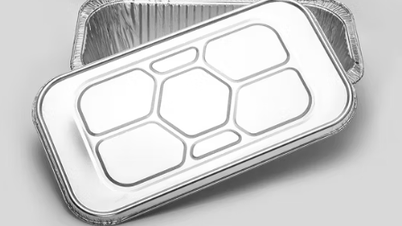

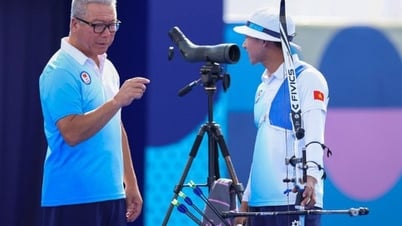
























Comment (0)